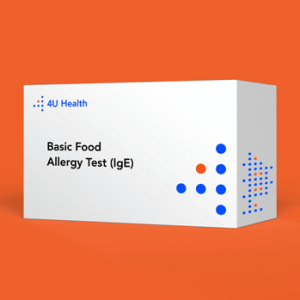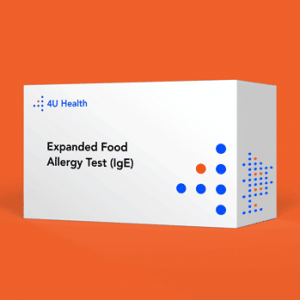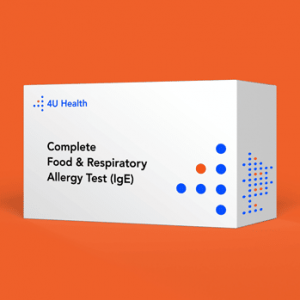
What Is a Food Allergy
An allergy is an abnormal reaction to an ordinarily harmless substance called an allergen. When an allergen (such as gluten) is absorbed into the body of an allergic individual, that individual’s immune system views the allergen as an invader and a chain reaction is initiated. White blood cells of the immune system produce immune globulin E (IgE) antibodies. These antibodies attach themselves to special mast cells causing a release of potent chemicals such as histamine. The allergic reaction may result in immediate or delayed food allergy symptoms.
Recognizing the Signs and Symptoms of Food Allergies
Immediate Food Allergy Reactions: One of the hallmark signs of food allergy symptoms is experiencing an immediate response after consuming a particular food. Immediate symptoms of food allergies often include:
Hives or rash;
Swelling of the lips, face, or throat;
Itching or tingling in the mouth;
Difficulty breathing or wheezing;
Nausea, vomiting, or diarrhea;
Dizziness or lightheadedness.
Food allergies may occasionally result in a severe reaction known as anaphylaxis. Anaphylaxis symptoms1 can initially be rather moderate, but if they are not treated right away, can quickly turn life-threatening. Please dial 911 right away if you encounter any of these symptoms:
Severe wheezing, chest tightness, or difficulty breathing;
Acute throat tightness or a lump in the throat.
Delayed Food Allergy Reactions: In some cases, food allergies can cause delayed reactions, making it more challenging to identify the food culprit. These delayed food allergy symptoms may manifest several hours or even days after consuming the allergenic food. Common delayed food allergy symptoms include:
Eczema or other skin irritations;
Gastrointestinal issues (e.g., abdominal pain, bloating);
Chronic nasal congestion or sinusitis;
Persistent asthma symptoms;
Fatigue or malaise.
How To Test for Food Allergies
To confirm or rule out a food allergy, physicians often utilize the “gold standard” IgE antibody blood testing method. This type of lab test measures IgE-mediated reactions to a list of specific foods. The higher the IgE antibody level, the more likely it is the food allergen is causing allergic symptoms. Higher IgE antibody levels may also be associated with increased severity of allergic reactions.2
New advancements in at-home finger prick collection kits have gained popularity as a convenient and reliable way to identify food allergies outside of the physician office.
Benefits of Food Allergy Testing at Home
Convenience and Accessibility: At-home finger prick collection kits offer a convenient alternative to traditional allergy testing methods. With these kits, you can collect a small blood sample from the comfort of your own home, eliminating the need for doctor appointments or laboratory visits. This accessibility allows individuals to take control of their health and explore potential food allergies without unnecessary hassle or inconvenience.
Cost-Effective: Compared to in-person allergy testing, at-home finger prick collection kits can be a cost-effective option. Traditional allergy tests conducted in medical settings often involve consultation fees, hospital facility fees, and laboratory charges. In contrast, finger prick collection kits are generally more affordable, making them an attractive choice for individuals seeking to identify food allergies on a budget.
Comprehensive Testing: Insurance covered tests performed at the doctor office typically do not cover broad extensive screening. Most insurance companies cover only up to a limited number of allergens per year.3 Many at-home finger prick collection kits offer comprehensive testing panels that can detect a wide range of common food allergens for affordable cash payment. These panels typically include tests for common allergens like peanuts, milk, eggs, wheat, soy, tree nuts, and shellfish, but also test for far more targets than those tests offered at doctors’ offices under insurance. As an example, 4U Health offers a 158-target food allergy IgE test. Expansive food allergy screening at-home allows you to gain a broader understanding of your potential food allergies and make informed decisions regarding your dietary choices.
Reliable Results: Several studies have shown that at-home finger prick collection kits provide accurate and reliable results comparable to traditional allergy testing methods. For example, a study published in Pediatric Allergy and Immunology demonstrated that finger prick blood capillary food allergy tests had a high degree of sensitivity and specificity in detecting specific IgE antibodies, which are associated with allergic reactions.
In general, IgE blood tests are very accurate in ruling out an allergy. Data indicates that IgE blood tests are approximately 95% accurate in providing negative results.4 This means if you want to rule out an allergy to a particular food, IgE blood testing offers a reliable, safe option.
In contrast, false positives are more likely to occur.5 This is why it is important to temporarily eliminate the positive IgE targets identified in a blood test from your diet to confirm the results. It’s advised to not limit more than four foods at a time. If your symptoms improve, you’re on the right path to identifying your food allergies.
Conclusion: Although at-home finger prick collection kits provide you with the convenience of testing at your own pace, it’s important to note that they are not a substitute for professional medical advice. Only a licensed healthcare professional can interpret the results and provide you with a definitive diagnosis. This is why it’s advised you share your at-home test results with your doctor to ensure you receive accurate information and appropriate guidance for managing your allergies.
Identifying food allergies is crucial for maintaining a healthy lifestyle and preventing severe allergic reactions. An-home finger prick collection kit offers a convenient, cost-effective, and reliable option for individuals seeking to determine their problem foods. If you suspect you have a food allergy, consider using an at-home finger prick collection kit in conjunction with professional medical advice to make informed decisions about your diet and overall well-being. Congratulations, now you know the telltale signs of food allergy symptoms and how to test for food allergies at home!
References:
Journal of Allergy and Clinical Immunology. “Guidelines for the Diagnosis and Management of Food Allergy in the United States: Summary of the NIAID-Sponsored Expert Panel Report .” URL.
Healthline. “How To Know if You Have a Food Allergy.” URL.
Pediatric Allergy and Immunology. “IgE Testing in Capillary Blood.” URL.


